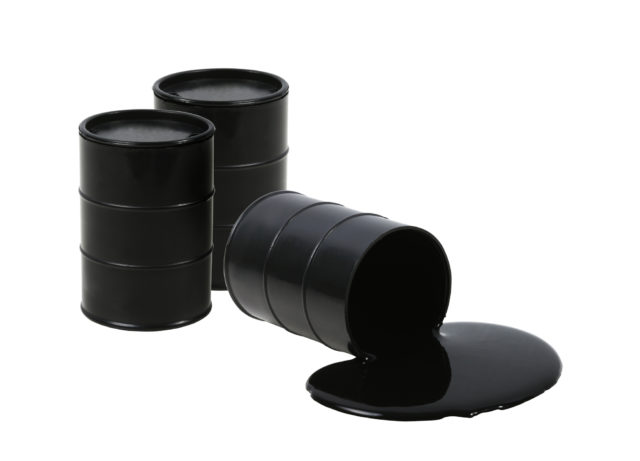- Mining and energy stocks fall as commodities struggle overnight
- Critical minerals demand gets boost to outlook from proposed ICE ban in Europe and EV subsidy talk in China
- Oil demand would need to really fall to take put the pressure on crude prices: ANZ
Welcome and goodbye to Friday, when as has become customary in recent weeks commodities are hard done by and mining stocks are s***ting the bed.
Big falls overnight across the base metals complex, metals that tie in closely with positive things like global growth and all that, suggested it would be a tough day for the big miners.
The Pilbara iron ore majors all fell hard, with only a minor run in some ASX-listed gold stocks polishing the turd that the materials sector, which suffered a 1.47% drop to 3.20pm AEST.
Regis Resources (ASX:RRL) was up around 8% after rising higher mid session after it was revealed Andrew Forrest’s Wyloo Metals had tried to buy up a big stake at a 13.8% premium.
Coal miners were similarly troubled as Australian premium coking coal prices fell around 10 bucks US to US$286.21/t. They flirted with US$670/t as recently as March, shortly after Russia’s invasion of Ukraine.
That saw the energy index fall hard. While its shares were down there was some joy for investors in the tightly held Yancoal (ASX:YAL).
The majority Chinese owned Australian coal digger will make US$800 million in debt repayments on the back of strong coal prices, adding to previous and scheduled repayments to lop 45% off the $3.975 billion in interest-bearing liabilities it owed this time last year.
The early payment will knock US$133m off its total finance cost over the life of the loans.
Monster share prices today:
Critical Minerals outlook brightens as ICE ban emerges
The 27 nations that make up the EU have voted to ban the sale of internal combustion engine vehicles from 2035 in a move that once again brings up the great talking point of how are we going to get all this god damn lithium.
Targeting 100 per cent reduction of CO2 emissions from new cars and vans within 13 years is awful ambitious.
The final laws are still some time away but, partnered with suggestions China could look to extend its EV subsidies past their best before date this year, there seems little sign that demand for metals needed in batteries is on the way down.
“Despite the energy crisis pushing Europe to rely more on fossil fuels, the region’s leaders have struck a deal to pursue tougher climate change policies,” ANZ commodity strategists Daniel Hynes and Soni Kumari said.
“Headlining the changes is a ban on the sale of combustion engines by 2035. At the same time, Beijing is looking to support its electric vehicle (EV) sector, which was completely shutdown during COVID lockdowns.
“It is extending subsidies and waiving taxes. This is likely to ramp up the search, by auto and battery makers, for supplies of critical minerals. Globally, the rise in fuel prices is boosting EV demand, and sales grew 80% y/y in Q1 2022.”
Oil demand needs to meltdown to bring down prices
Also looking staunch in the wake of a potential recession, Hynes and Kumari say, is oil, which is doing a weird Yin-Yang dance with battery metals right now.
Oil is on track for a third straight weekly loss, with recession fears at the forefront of moves that have brought crude WTI prices down from ~US$120/bbl to around US$105/bbl.
Don’t get your hopes up that life gets easier at the bowser though.
Hynes and Kumari see support for oil at US$100 in a “typical global recession” with global demand needing to fall by 5% to take forecasts down to US$80.
That’s way more than previous recessions, which have seen oil demand slide 0-3%, with the exception of 1982. Supply shocks are more extreme this time around as well.
“Current events present a new challenge to the oil market. The supply shock is significantly higher than its experienced before,” Hynes and Kumari say.
“The Gulf and Iran-Iraq wars impacted only 5% and 2% of global supply respectively.
“Russia produced around 10% of world supply in 2021 and has been part of the OPEC+ alliance that has helped stabilise the market over the past two years.
“The recent war-induced supply shocks occurred when the oil market was oversupplied. OECD inventories had been building steadily in the lead up to both the pandemic and the invasion of Ukraine. This was also the case for the previous global recessions.
“However, strong demand and one of the biggest supply shocks it has experienced has left the oil market extremely tight.
“We estimate it will be in deficit of around 2mb/d in H2 2022. If we assume a global recession pushes global oil demand lower by 3%, the market would still not be oversupplied.”
Over concern as well are falling inventories, which could continue to fall if the market remains in deficit.
“Converting inventories into days of consumption, makes that relationship is even clearer (Figure 11). On this basis, OECD inventories are at around 7.4 days,” Hynes and Kumari said.
“This correlates to prices between USD100-120/bbl. Our current forecasts suggest inventories will continue to fall 2023, which, on its own, should support further upside price moves in oil.
“If we assume that global oil demand falls by 2.5% as economic activity slows, oil markets will rebalance. This would see inventories stabilise, supporting oil prices at
USD100/bbl.
“A fall of 5% in global demand, would see inventories build to around 9 days of consumption, equivalent to crude oil prices between USD50-80/bbl.”
You might be interested in












